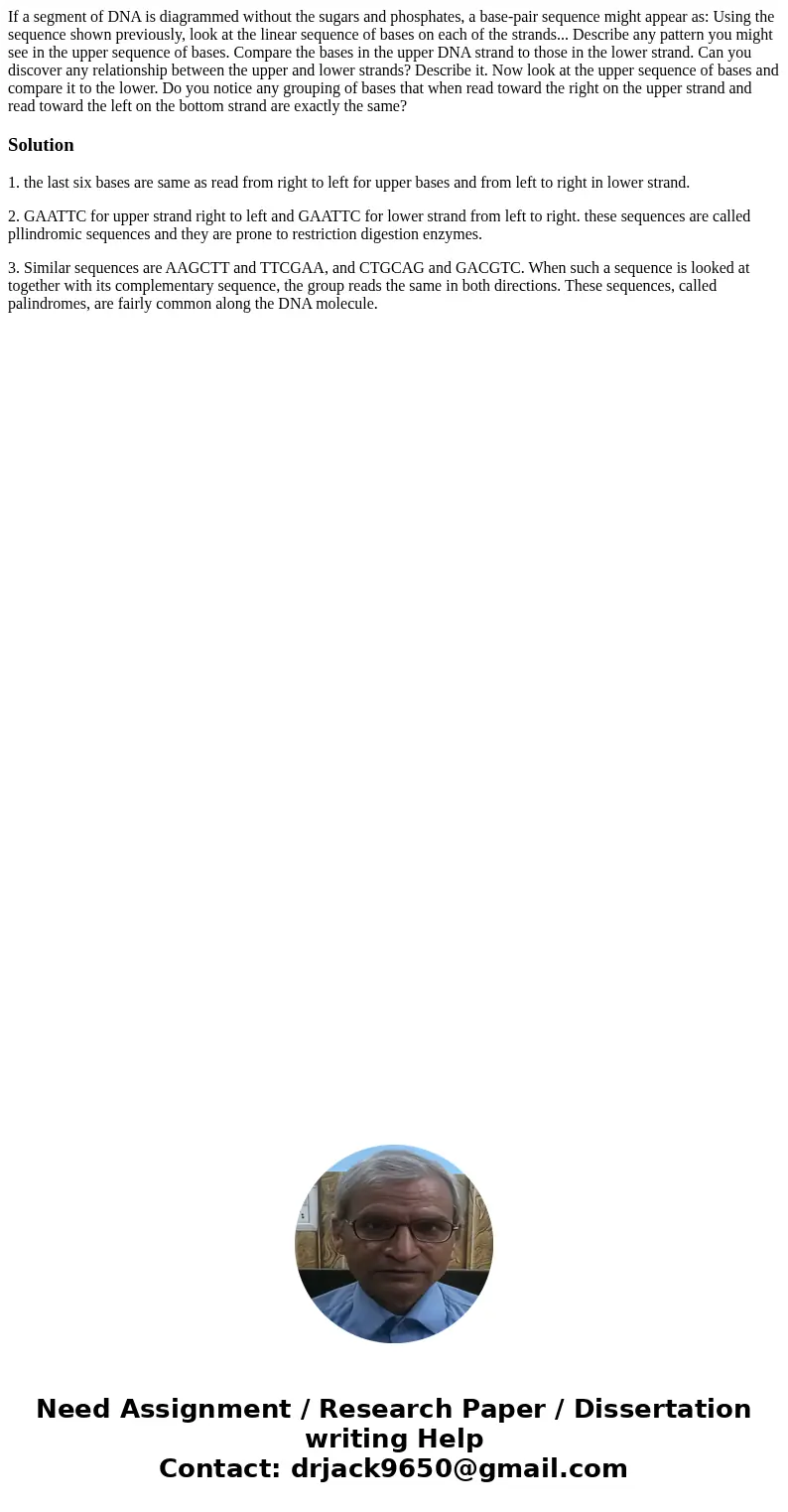If a segment of DNA is diagrammed without the sugars and pho
If a segment of DNA is diagrammed without the sugars and phosphates, a base-pair sequence might appear as: Using the sequence shown previously, look at the linear sequence of bases on each of the strands... Describe any pattern you might see in the upper sequence of bases. Compare the bases in the upper DNA strand to those in the lower strand. Can you discover any relationship between the upper and lower strands? Describe it. Now look at the upper sequence of bases and compare it to the lower. Do you notice any grouping of bases that when read toward the right on the upper strand and read toward the left on the bottom strand are exactly the same? 
Solution
1. the last six bases are same as read from right to left for upper bases and from left to right in lower strand.
2. GAATTC for upper strand right to left and GAATTC for lower strand from left to right. these sequences are called pllindromic sequences and they are prone to restriction digestion enzymes.
3. Similar sequences are AAGCTT and TTCGAA, and CTGCAG and GACGTC. When such a sequence is looked at together with its complementary sequence, the group reads the same in both directions. These sequences, called palindromes, are fairly common along the DNA molecule.

 Homework Sourse
Homework Sourse